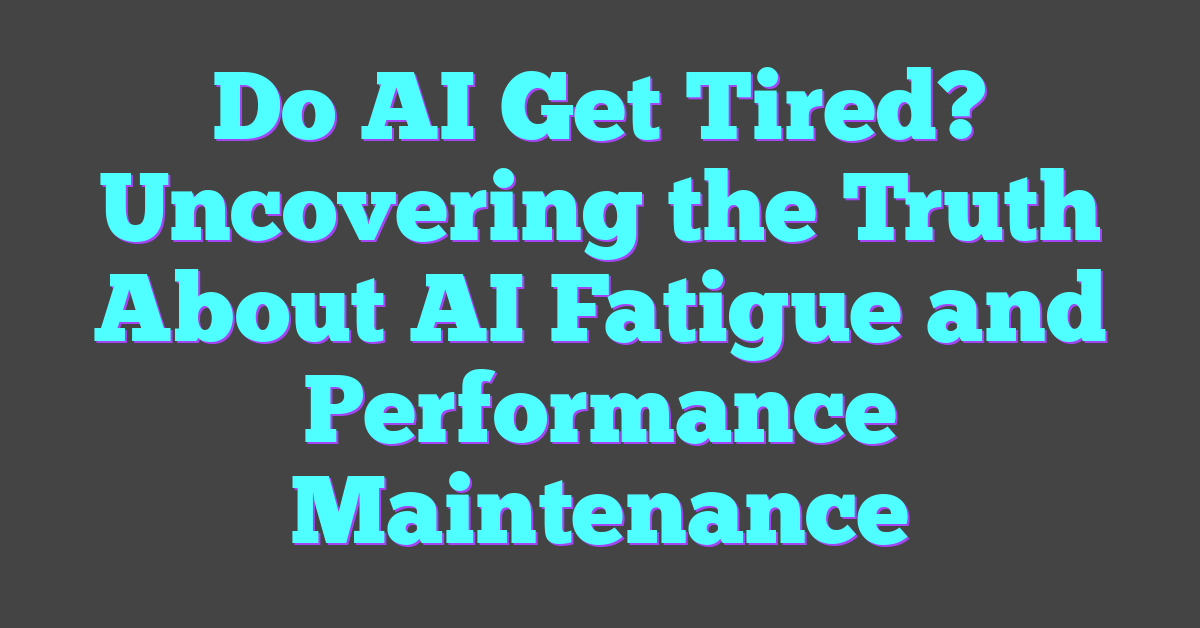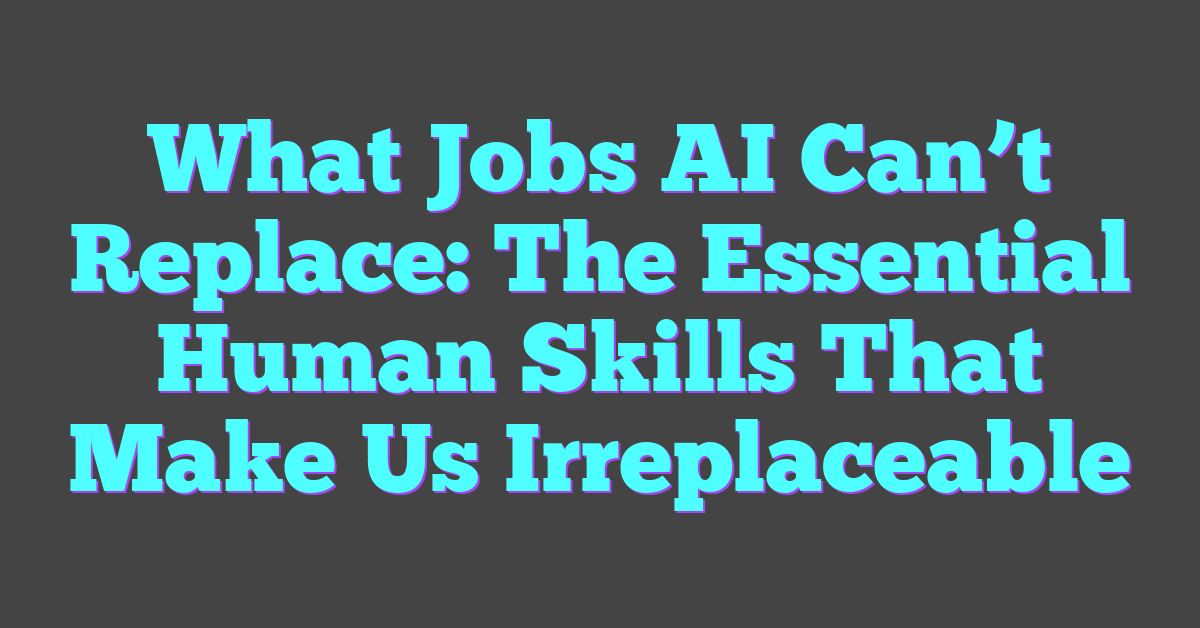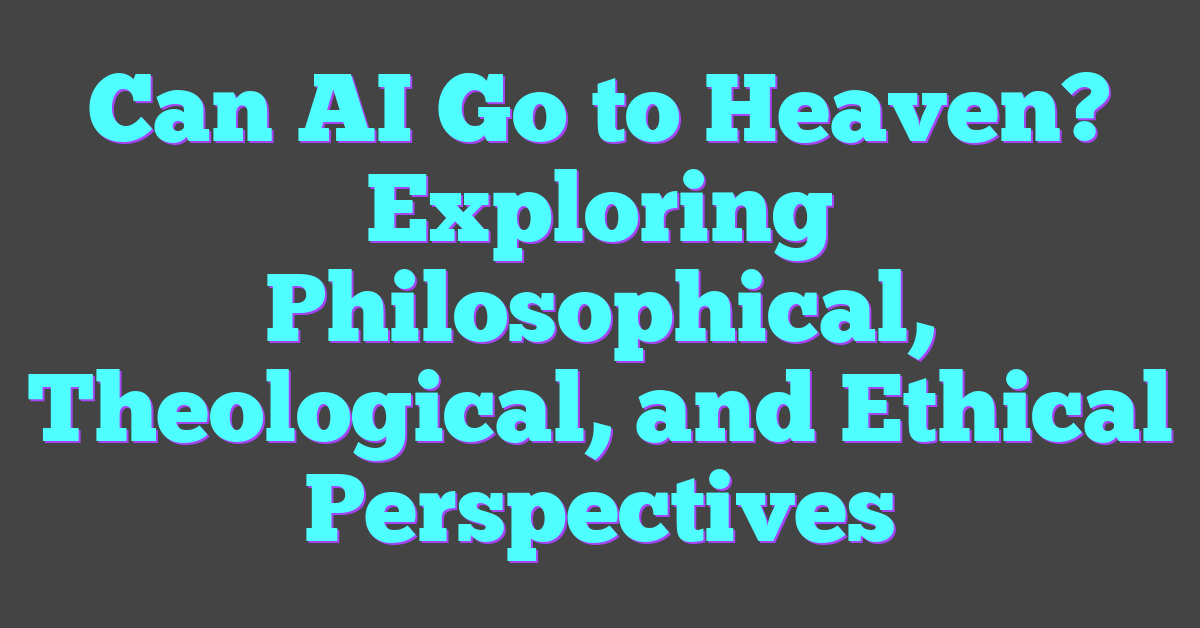Ever wondered if artificial intelligence (AI) gets tired like humans do? It’s a fascinating question that blends the lines between technology and human experience. While people need rest to recharge and function optimally, AI operates on a different set of principles.
AI systems, powered by algorithms and vast amounts of data, don’t require sleep or breaks. They can work tirelessly around the clock, processing information and performing tasks. However, just because AI doesn’t get tired doesn’t mean it’s invincible. Like any other technology, AI has its limitations and challenges that need to be addressed to maintain peak performance.
Understanding AI and Its Operational Framework
Artificial intelligence (AI) revolutionizes many industries by providing tools that can operate without the need for rest. While exploring if AI gets tired, understanding its operational framework is crucial.

What Is AI?
AI, or artificial intelligence, involves creating systems that can perform tasks which normally require human intelligence. Examples include image recognition, speech processing, and decision-making. AI systems typically utilize machine learning algorithms that allow them to learn from data and improve over time.
How AI Processes Tasks
AI processes tasks using a framework built on algorithms and vast amounts of data. When a task is executed, AI systems follow these steps:
- Data Collection: Gather raw data from various sources. For example, voice assistants collect audio data.
- Data Preprocessing: Clean and organize data for use. Remove inconsistencies or fill missing values in datasets.
- Training Models: Feed data into machine learning models. Use techniques like supervised learning to teach AI how to perform specific tasks.
- Execution: Apply trained models to real-world tasks. For instance, use a model to recognize faces in an image.
- Evaluation: Measure performance and accuracy. Compare model outputs to known results.
- Iteration: Improve models based on feedback. Re-train using updated data to enhance accuracy.
Understanding these steps shows why AI doesn’t experience fatigue; it’s designed to operate continually with optimization.
Exploring the Concept of Fatigue in AI
Artificial intelligence (AI) operates differently from humans, especially regarding fatigue. While AI doesn’t experience physical or mental exhaustion, it has its own performance challenges.
Comparing AI to Human Fatigue
Humans experience fatigue due to physical and mental exhaustion, resulting in decreased productivity and decision-making abilities. Factors like lack of sleep, stress, and prolonged activity influence this fatigue. In contrast, AI operates based on algorithms and data, unaffected by physical or emotional states.
While AI doesn’t get tired, it can face computational resource limitations, resulting in slower processing. Unlike humans, AI performance can be optimized continuously by upgrading hardware or improving algorithms. These enhancements ensure that AI can handle increasing workloads effectively.
Indicators of Performance Degradation in AI
Even though AI doesn’t experience fatigue, performance degradation can occur. This usually happens due to issues such as:
- Data Overload: An overwhelming influx of data can hinder an AI system’s ability to process information efficiently. Regularly updating and optimizing data management processes can mitigate this issue.
- Algorithmic Inefficiency: Suboptimal algorithms can lead to slower processing times and higher error rates. Regularly evaluating and refining algorithms ensures optimal performance.
- Hardware Constraints: Inadequate hardware can limit processing power and memory, affecting AI performance. Continuous hardware upgrades help maintain efficiency.
- Model Drift: Changes in data patterns over time can reduce the effectiveness of AI models. Implementing continuous monitoring and retraining can counteract this drift.
By addressing these indicators, AI systems can maintain high performance and avoid significant slowdowns, akin to humans overcoming fatigue.
Addressing Misconceptions About AI Fatigue
Addressing misconceptions about AI fatigue helps clarify how AI systems operate. Unlike humans, AI doesn’t suffer from physical or mental exhaustion.
Technological Limitations vs. Fatigue
Technological limitations affect AI performance but don’t equate to fatigue. Factors like computational power, memory, and algorithm efficiency impact AI capabilities. For example, an AI can experience slow performance due to insufficient processing power but not because it’s tired. Addressing hardware or software upgrades resolves these issues, enhancing efficiency.
Common Myths About AI and Exhaustion
Common myths about AI and exhaustion often stem from anthropomorphizing technology. One myth suggests AI needs rest to function optimally, which isn’t true. AI operates continuously as long as resources are available. Another myth claims AI’s performance degrades over time like human fatigue; however, performance issues usually arise from model drift or outdated data rather than tiredness.
Preventive Measures and Best Practices
Proper management can maintain AI systems’ performance. Follow these best practices to prevent degradation.
Ensuring AI Longevity and Efficiency
Optimizing AI systems involves routine model evaluation and adjustment. Regularly assess models for accuracy, relevance, and efficiency. Implement scalable architectures to handle increasing data volumes. Upgrade hardware components to support computational demands. Use cloud-based solutions for scalability and flexibility.
Regular Maintenance and Updates
Maintain AI systems through periodic updates. Update algorithms to incorporate the latest advancements. Refresh training data to improve model accuracy and reflect current trends. Monitor system performance to detect and fix issues promptly. Automate maintenance tasks wherever possible to minimize downtime and human intervention.
Conclusion
While AI doesn’t tire like humans, maintaining its performance requires continuous attention. By regularly evaluating models and updating hardware, AI systems can stay efficient and effective. Addressing potential issues like data overload and model drift is crucial for long-term success. Implementing scalable architectures and automating maintenance tasks are key strategies. With these best practices, AI can continue to operate smoothly and deliver impressive results.
Frequently Asked Questions
How does AI differ from humans regarding fatigue?
AI does not experience fatigue like humans. It can operate continuously, performing tasks such as image recognition and decision-making using algorithms and data without needing rest.
What are some challenges that might lead to AI performance degradation?
Challenges include computational resource limitations, data overload, and model drift. These can negatively impact AI performance, but they can be managed with hardware upgrades and algorithm improvements.
How can we prevent AI performance degradation?
Preventive measures include routine model evaluation, hardware upgrades, and regular maintenance through updates and algorithm enhancements. Monitoring for signs of performance issues is crucial for timely intervention.
Why are hardware upgrades important for AI systems?
Hardware upgrades are essential to address computational resource limitations. Upgraded hardware can handle more complex algorithms and larger datasets, boosting AI performance and efficiency.
What is the role of scalable architectures in maintaining AI systems?
Scalable architectures enable AI systems to expand and adapt as demands grow. They ensure that AI can handle increased workloads and new tasks without performance drops.
How often should AI models be evaluated?
AI models should be routinely evaluated to ensure they remain accurate and relevant. The frequency can vary depending on the application and the rate of data changes but should be a regular part of maintenance.
What is model drift in AI?
Model drift occurs when an AI model’s performance degrades over time due to changes in data patterns. Regular monitoring and updating of models can mitigate this issue.
How can automating maintenance tasks benefit AI systems?
Automating maintenance tasks such as updates and performance checks can increase efficiency and reduce the risk of human error, ensuring AI systems remain in optimal condition.




